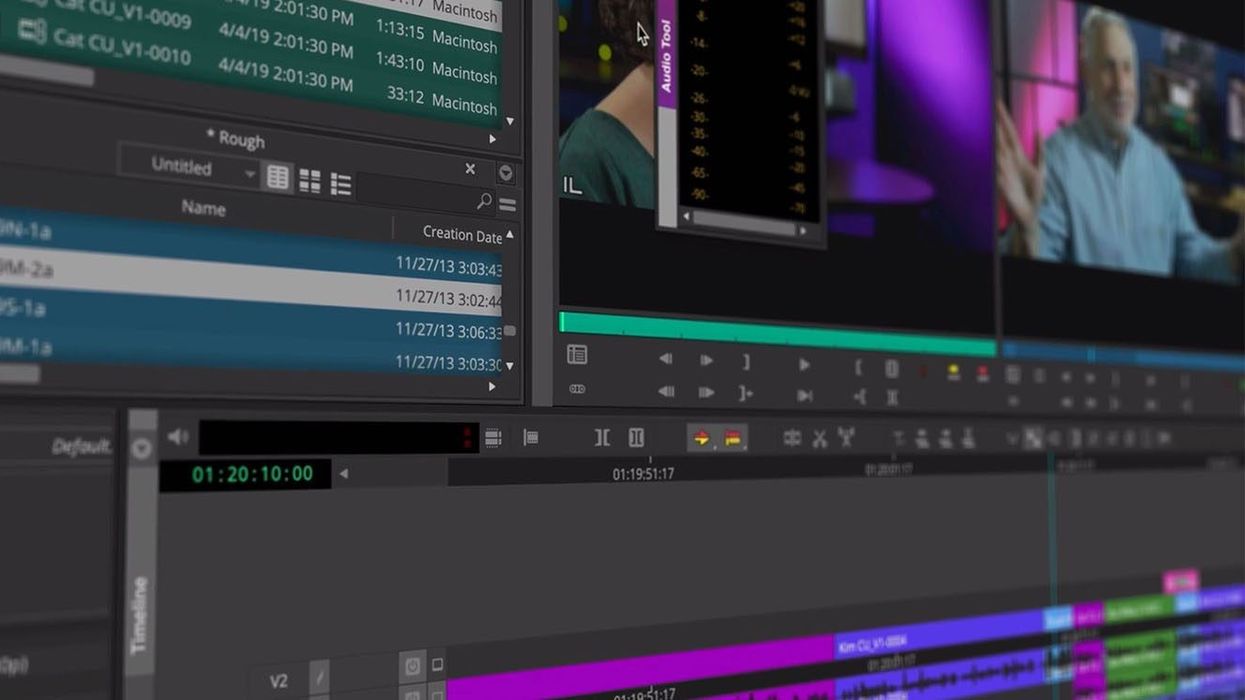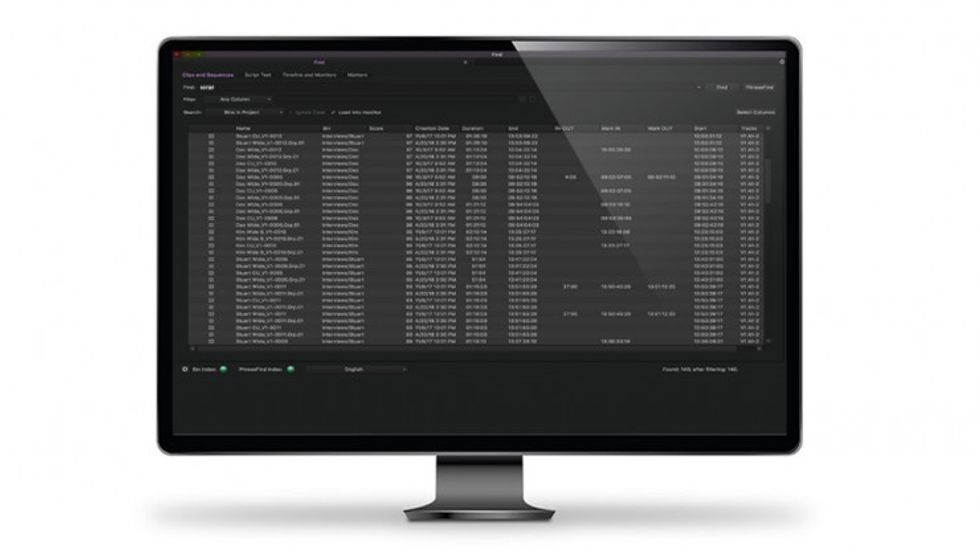Invaluable Tips for Editing in a Foreign Language
Editing a foreign-language project doesn't have to be intimidating.

I speak only one language fluently, English—which is embarrassing, and so I overcompensate for that by accepting editing work in other languages. I’ve edited narrative films and informational videos in Mandarin, Thai, Japanese, and Korean, none of which are languages I speak or understand.
The first time I edited a language I did not speak, it was a short Chinese informational video shot interview-style, and there were seven takes total.
I listened closely to each take, watched hand gestures carefully, and paid attention to facial expressions. When the speaker blinked quickly, he had flubbed his line and started over. I listened for patterns of speech and inflections that sounded the same to me. Most importantly, I monitored audio waveforms and memorized patterns in peaks—in some cases, I paid closer attention to similar sequences in the waveform than I did to the dialogue itself.
I was editing in DaVinci Resolve and relied heavily on Resolve’s Full Clip Audio Waveform tool, which allows you to see the audio waveform on your source monitor simultaneously with your video clip before you cut it into your timeline. This tool makes it easy to start to learn waveform patterns for specific words and phrases. Once I felt I had an accurate audio bed lined up, a Mandarin speaker came to check my work. He told me he didn’t peg me for a Mandarin speaker, but the majority of the scenes I cut were coherent and correct.
Many editors are asked to edit languages they may not be fluent in. So, how do we do it? What are the tools and techniques we can use in multilingual editing, and how can technology help us?
I spoke with editors Na’Imah Pope and Sara Sachs to help us answer these questions through recent projects they worked on. Pope edited a narrative short film Ninja in Arabic and Sachs discussed editing a commercial spot in Bahasa.
Here’s what they had to share.
No Film School: Hey, Sara and Na’Imah! Thanks for chatting. What languages do you speak and what languages have you edited?
Na’Imah Pope: I only speak English, but I’ve edited Arabic, Spanish, Chinese, Urdu, Punjabi, Korean, Vietnamese, and Russian.
Sara Sachs: I only speak English fluently, but I understand and speak some French. I’ve edited in Bahasa, French, and Spanish.
NFS: Can you tell me a little bit about how you navigated these projects?
Sachs: I worked in Avid Media Composer and used MC’s ScriptSync tool to sync up my transcript with the media using searchable markers. My assistant editor used a transcription tool called SpeedScriber to phonetically transcribe the video clips, so even though I didn’t know exactly what the interview subjects were saying, I started learning which phrases went where in a sequence by reading and searching phonetic transcriptions.
Pope: My go-to NLE is Adobe Premiere Pro. Similarly, a software I have found useful as both an editor and assistant editor is a transcription tool called Trint. After the media is transcribed and translated, I can download the timecoded transcripts and lay them right into Premiere. Premiere’s caption feature allowed me to import translations as subtitles, which made editing in Arabic a little easier.
Typically, I use separate sequences for each translated scene by subject, scene number, and camera angle before laying in the translations. I also like to use color-coded labeling to keep things organized. I can’t emphasize enough how important it is to maintain organization. As an editor and assistant editor, being organized is tremendously important even if you speak the language, but more so when you do not. You have to manage your assets and keep your sequences locked in. It is absolutely the key to your success.
NFS: Absolutely. When you’re editing in a foreign language, it’s imperative to the process that you’re keeping your dialogue accurate. Can you talk about some strategies you used to cut together coherent and correct sentences?
Pope: You have to really study the footage while following along with the script. After hours and hours of listening to the footage, I noticed that you start to become familiar with certain words.
Becoming familiar with basic phrases as they relate to the world of your script comes in handy. For example, I had no idea what "hal 'ukalat lahm alkhinzira?" means, but I trained my ears to listen for the sound of "zira" in a particular scene. I knew the sentence had ended and it would be time to cut in the other character’s following line.
Sachs: That’s really interesting, you definitely notice patterns of speech and look for sounds that occur at the same times in a sentence or phrase. You lose a lot of the syntax when you don’t speak the language, in some ways you’re relying on faith until it gets into the translator’s hands that what you’ve cut together makes sense in English and in a foreign language.

Sachs: My assistant editor did a really awesome job with ScriptSync and making markers with the transliteration of Bahasa in the Avid project for me. I had a printed-out script in English with timecode, so there was quite a bit of cross-referencing. Then, I used the Avid PhraseFind function to search all phonetic spelling of a specific word, watched every take of that specific phrase or sentence, and picked the delivery that felt best to me.
Pope: Interestingly enough, the director of Ninja wrote the script in English and had the actors translate it to Arabic in their delivery, so he had a specific idea of what he wanted the performances to look like.
When I edit English narratives, I’m meticulous about my performance choices. I look at how someone says a word in one take versus another, even if it’s a slight change in the modulation of intonation or pitch in the voice. That’s not always possible when editing a foreign language.
Sachs: That’s so true. I once edited a spot in French, and the producer I was working with also spoke a little bit of French, so we felt that together we could put this cut together and it would make sense. It later went to testing in Paris, and the focus group in Paris could not get past the fact that the VO artist we used was a Canadian-French speaker so she had that accent, which is something the producer nor myself would have picked up on!
NFS: Some things you just need a native speaker for. Do either of you have any last advice for editors embarking on a multilingual project?
Pope: I cannot stress enough the importance of organization—in all editing, but especially in editing a foreign language. Utilize your labels, sequences, timecode, and your instincts as an editor.
Editing in different languages has been one of the highlights of my career. Starting a project is endeavoring on a new adventure, but foreign languages make it a whole new puzzle. It unveils different cultures while also reminding us that there are universally shared moments among us all.











